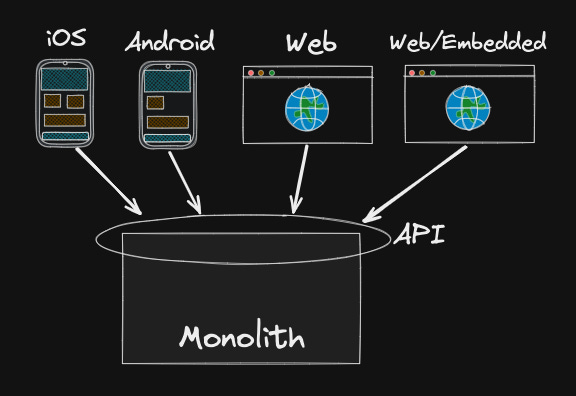How SoundCloud scaled its Architecture using BFF and Value-Added Services?
The SoundCloud’s journey from monolith to BFF and Microservices. (4 minutes)
Intro
Initially, SoundCloud operated through a single monolithic system that managed all interactions across its web client and mobile apps. This system handled numerous requests and services, growing increasingly complex with each new feature. The shared API was a common factor across all platforms, but as SoundCloud expanded, this approach soon reached its limitations, setting the stage for a strategic transformation.
Transition to Microservices and BFF
Recognizing the need for scalability, both operationally and organizationally, SoundCloud embarked on a transition to a microservices architecture. This shift mean breaking down the monolith into smaller, more manageable services, each responsible for specific feature.
A pivotal aspect of this transition was the introduction of Backend for Frontend (BFF) architecture. BFF allowed each team to develop A…




